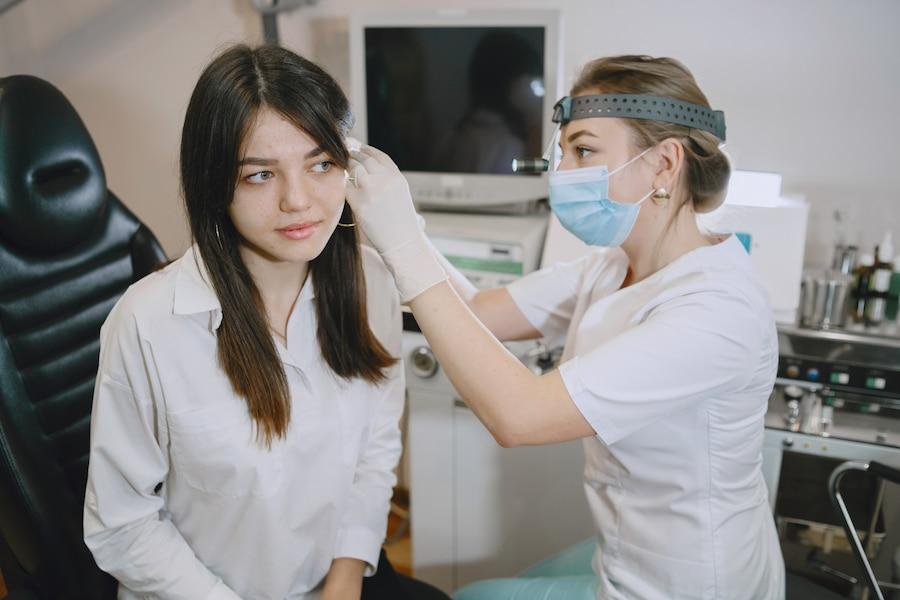Ear surgery, also known as otoplasty, is a transformative procedure designed to correct deformities and improve the appearance of the ears. This surgery has become increasingly popular among individuals seeking to enhance their facial symmetry and boost their self-esteem. This article will delve into the various aspects of ear surgery, including the different types of procedures, the safety measures involved, and the psychological impact on patients.
Types Of Ear Surgery
Otoplasty encompasses a range of procedures to address different issues related to the ears. The most common types include:
- Pinning Back Protruding Ears: This procedure is designed to correct ears sticking too far from the head. It involves reshaping the cartilage and securing the ears closer to the head, creating a more natural appearance.
- Correcting Ear Deformities: Some individuals are born with congenital ear deformities such as microtia (underdeveloped ears) or anotia (absence of ears). Reconstructive surgery can create a more typical ear structure, significantly improving the patient’s quality of life.
- Earlobe Reduction: Earlobes can become elongated or stretched over time due to aging or wearing heavy earrings. Earlobe reduction surgery trims and reshapes the earlobes for a more youthful and proportional look.
- Repairing Torn Earlobes: Accidents or the use of heavy jewelry can result in torn earlobes. Surgical repair can restore the earlobe to its original state, allowing the individual to wear earrings again if desired.
The Surgical Process
Ear surgery is typically performed outpatient under local anesthesia, although general anesthesia may be used for more complex cases or in young children. Depending on the extent of the surgery, the procedure generally takes one to three hours.
- Consultation: The process begins with a thorough consultation with a board-certified plastic surgeon. During this meeting, the surgeon assesses the patient’s ears, discusses their goals, and explains the available surgical options.
- Preparation: Before the surgery, patients are advised to avoid certain medications that can increase bleeding and to stop smoking, as it can impair healing. The surgeon will also provide specific instructions on preparing for the procedure.
- Surgery: During the surgery, the surgeon makes incisions behind the ears or within the natural creases of the ears to minimize visible scarring. The cartilage is then reshaped and secured with sutures to achieve the desired appearance. In some cases, additional tissue may be added or removed to create a more balanced look.
- Recovery: After the surgery, patients can expect some swelling, bruising, and discomfort, which can be managed with prescribed pain medication. A headband or bandages may be worn to protect the ears and maintain their new position during healing. Most patients can return to work or school within a week, but strenuous activities should be avoided for several weeks.
Safety Measures And Risks
Like any surgical procedure, otoplasty carries certain risks, but choosing a qualified and experienced surgeon can minimize these risks. Common hazards include infection, bleeding, adverse reactions to anesthesia, and scarring. However, serious complications are rare; most patients achieve satisfactory results without significant issues.
To ensure the highest level of safety, it is crucial to follow the surgeon’s pre- and post-operative instructions carefully. This includes attending all follow-up appointments to monitor the healing process and promptly addressing any concerns that may arise.
Preparation Before Surgery:
Before the procedure, patients should avoid smoking and discuss any medications or supplements they are taking with their surgeon, as some may need to be paused. Maintaining a healthy lifestyle, including proper nutrition and hydration, can also aid in a smoother recovery.
Recovery Timeline:
After the surgery, patients typically wear a headband to support the ears in their new position for several weeks. Initial recovery takes about 1 to 2 weeks, during which patients should avoid strenuous activities and follow their surgeon’s advice on wound care to prevent infection and promote healing.
Long-term Care and Maintenance:
Long-term results of otoplasty are generally permanent, but protecting the ears from trauma and sun exposure is essential. Regular follow-ups with the surgeon ensure that any late-occurring issues can be promptly addressed.
Potential Benefits of the Surgery:
Otoplasty can significantly improve the appearance of the ears, boosting self-esteem and confidence. It can also correct congenital deformities or damage caused by injury, leading to aesthetic and functional improvements.
Choosing the Right Surgeon:
It is crucial to select a board-certified plastic surgeon with extensive experience in otoplasty. Patients should review the surgeon’s credentials, ask about their experience with the procedure, and look at before-and-after photos of previous patients.
What to Expect During the Surgery:
Otoplasty is usually performed under local or general anesthesia, depending on the patient’s age and the complexity of the procedure. The surgery typically lasts 1 to 2 hours, and patients can often return home the same day.
Psychological Impact And Benefits
The psychological benefits of ear surgery can be profound, especially for individuals who have struggled with self-consciousness or social anxiety due to the appearance of their ears. Patients often report improved self-esteem and confidence following the procedure.
- Children and Adolescents: Children with prominent ears are often targets of teasing and bullying, which can have lasting effects on their self-esteem. Otoplasty can alleviate these issues, allowing them to engage more comfortably in social situations.
- Adults: Adults who have been self-conscious about their ears for years often experience a renewed sense of confidence and self-worth after surgery. This can positively impact their lives, including personal relationships and professional opportunities.
Conclusion
Ear surgery, or otoplasty, offers a safe and effective solution for individuals seeking to enhance the appearance of their ears. Various procedures are available to achieve a more balanced and aesthetically pleasing look. Adhering to the surgeon’s guidelines and choosing a qualified professional can minimize the risks associated with the surgery, resulting in a positive and life-changing outcome.
The decision to undergo ear surgery is personal, and it is essential to have realistic expectations and a clear understanding of the process. For those who choose this path, otoplasty can be a transformative experience, providing physical improvements and a significant boost in confidence and overall well-being.




